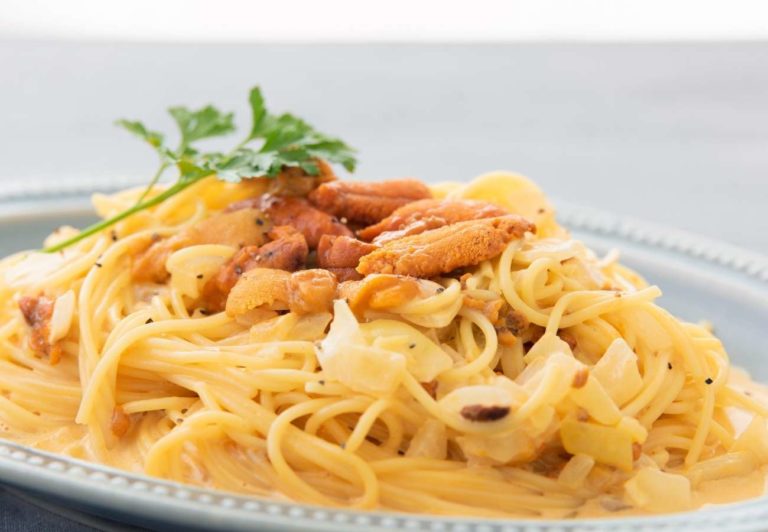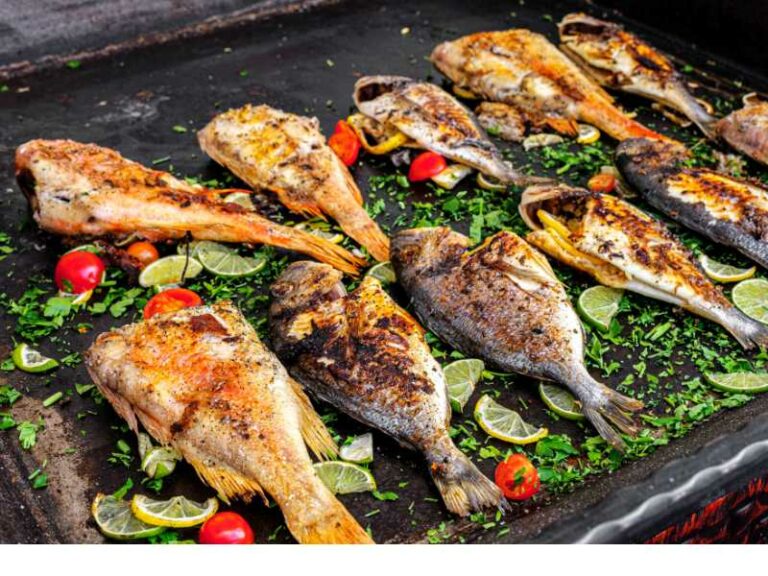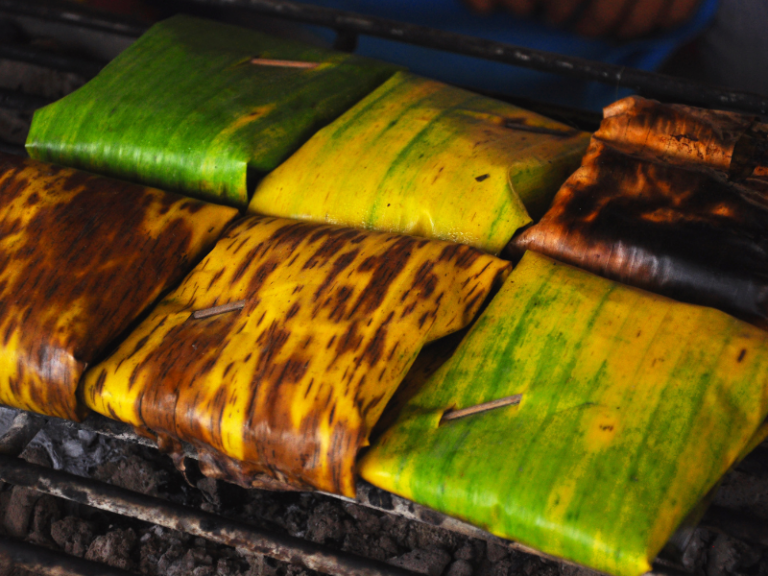Luxembourgish Food: 14 Traditional Dishes of Luxembourg

Luxembourg is a small landlocked country located in northwestern Europe surrounded by Belgium, Germany and France. Its population is just over 600,000 and the main languages spoken are French, German, English and Luxembourgish (a German dialect mixed with French).
Luxembourg’s landscape is made up mostly of countryside, forest and woodlands. The country is popular with tourists due to it picturesque landscape and well-preserved historical buildings and sights. It is also considered one of the best and safest countries to live.
Staple foods in Luxembourg include potatoes, meat and bread. The country produces wheat, spelt, cheeses and yogurts, fruit like apples and pears and numerous wines all for the country’s own consumption.
Luxembourg produces all the milk and beef it needs which makes sense since the meat consumption is high and is part of almost every meal. Residents also have a fairly large affinity for baked goods and pastries.
Judd Mat Gaardebounen
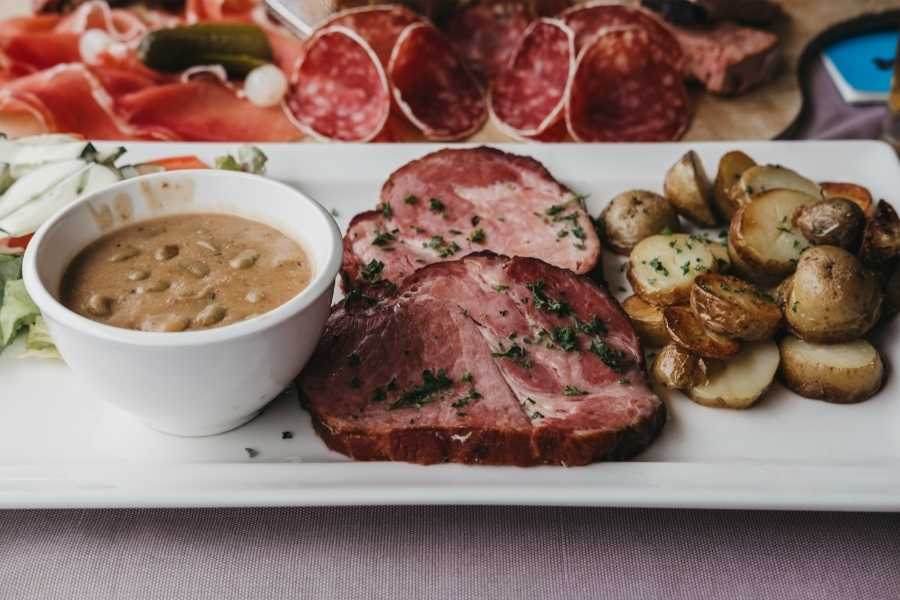
Judd Mat Gaardebounen is a dish of smoked pork necks and beans. The pork is cooked with vegetables and spices until it is tender. The beans are cooked by blanching.
Some recipes of Judd Mat Gaardebounen require the salted pork to be soaked overnight first. In others, the pork is cooked in a mixture of vegetables, herbs and red wine. The pork is sliced before serving with a creamy sauce, the beans and potatoes. This dish is best enjoyed in the early summer when broad beans can be freshly acquired because they are in season.
Kuddelfleck
Kuddlefleck is a dish consisting of fried tripe. Tripe is the lining of an animal’s stomach. Kuddlefleck uses cow tripe. The tripe is coated in breadcrumbs and fried until golden brown. Its usually served with potatoes in a white wine or tomato sauce.
Bouneschlupp
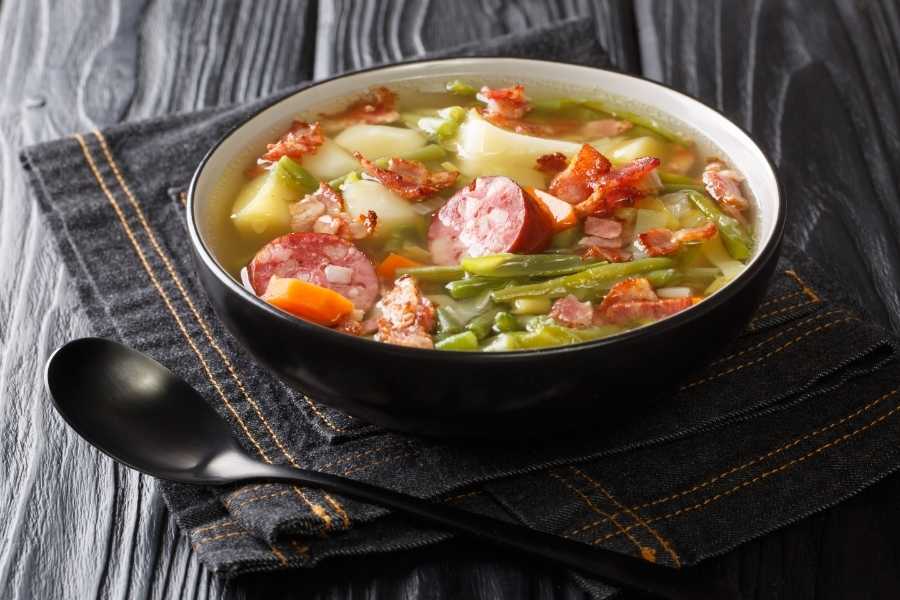
Bouneschlupp is a creamy soup made from green beans, potatoes, onions, bacon or sausages. The soup is sometimes thickened using cream or flour and the consistency is chunky because of the pieces of meat and vegetables. It’s very lightly flavored since salt and black pepper are the only seasonings used. This dish is also popular in other European countries like Germany and Belgium.
Gromperenzopp
Gromperenzopp is another popular Luxembourg soup which is potato based and also consists of leeks, cream and seasoned with salt and black pepper. Interestingly, the soup is also made with egg yolks which is blended into the cream before adding to the pot. Like Bouneschlupp, Gromperenzopp is a staple dinner meal.
Feierstengszalot
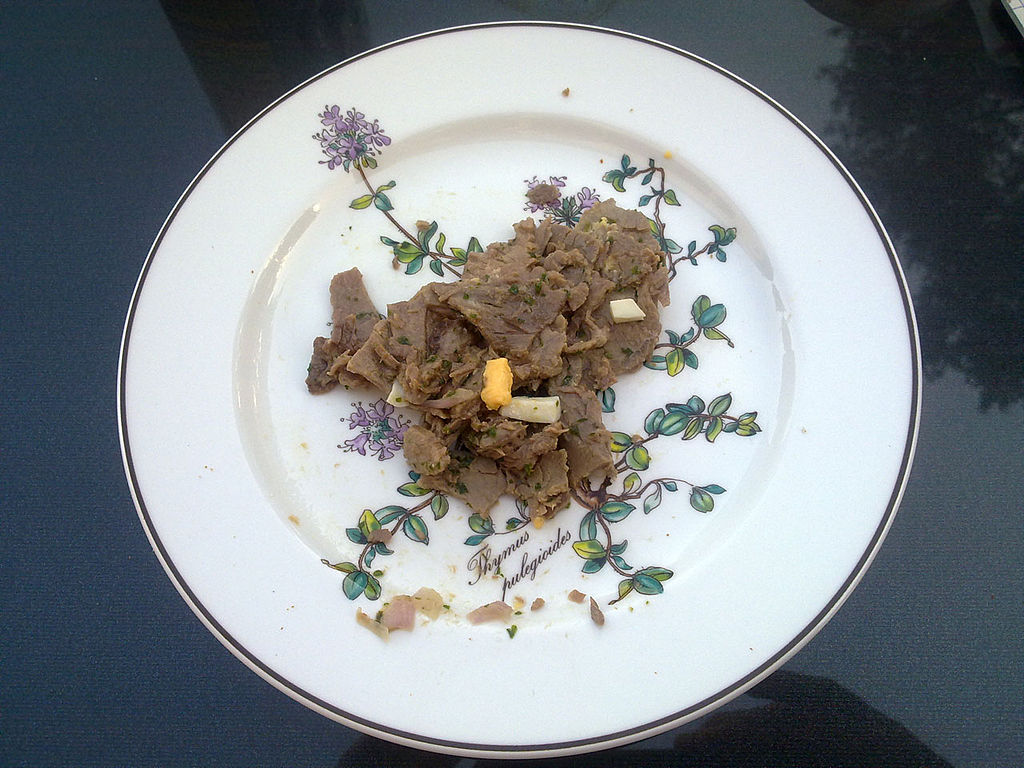
Feierstengszalot is a beef salad, served cold. Along with cooked beef, the salad can include boiled eggs, chopped onions, capers and gherkins. It’s usually served with a creamy sauce or vinaigrette. This dish is a popular way to use up left over dinner meats.
Jambon d’Ardenne (Cured Ham)
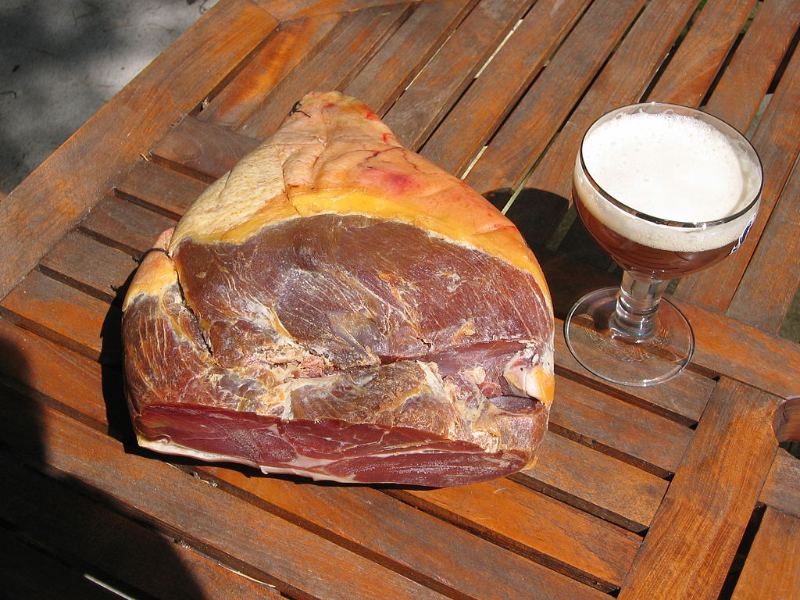
Jambon d’Ardenne or Ardennes ham is a type of cured meat made in the various Wallonian regions of Luxembourg as well as Liege and Namur (both in Belgium)
In order to prepare Jambon d’Ardenne, the ham is dry-salted first and left to rest for 14 days before being immersed into brine. Immersion of ham into the brine allows the ham to absorb all the flavors of a traditional blend of spices which include thyme, laurel, juniper berries and cloves.
Träipen

Träipen is a Luxembourgish style black pudding. Black pudding is known as blood sausage in the US. The sausage is made from a combination of big fat, blood and offal meats. Offal meats refer to the parts of the animal which are usually discarded or considered taboo in some places to eat such as animal hearts, lung, kidney and tongue.
Träipen is different from other blood sausages because contains green cabbage and the use of spices like caraway. It’s usually served with potatoes and sauce.
Gromperekichelcher
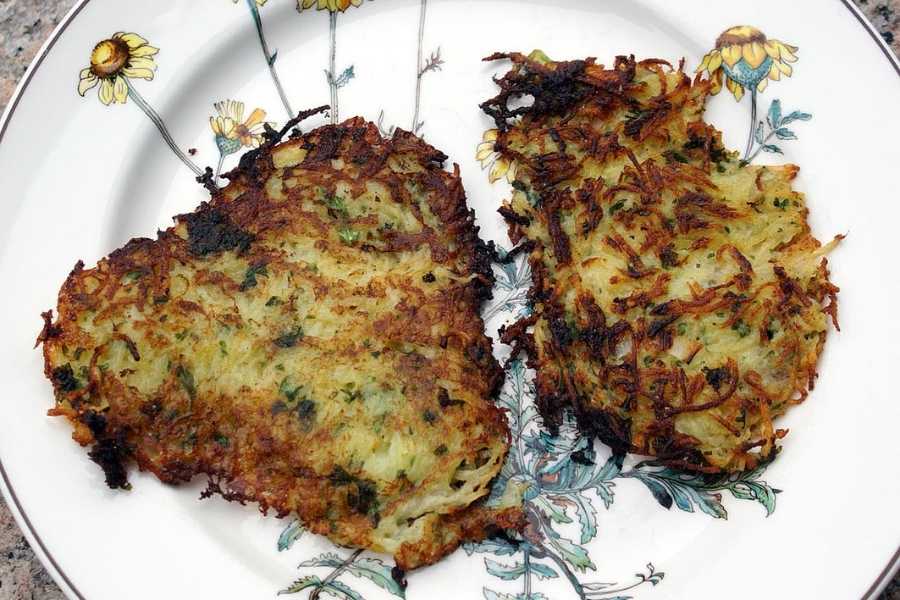
Gromperekichelcher is a potato pancake. The pancakes consist of grated potatoes, eggs and seasonings like parsley, onions and garlic. It is cooked by frying in shallow oil. The crispy pancakes are usually served with an apple sauce dip.
Gromperekichelcher is popular as a snack or street food particularly at shopping markets and fairs.
Éisleker Ham
Éisleker Ham is a specialty ham from the high attitudes of the Osling region. Pig hind legs are brined for several weeks then smoked slowly for about a week. The ham is served similar to cold cuts, thinly sliced and used to make sandwiches, salads or eaten with potatoes. Éisleker Ham is also known as Jambon d’Oesling.
Friture de la Moselle
Friture de la Moselle is a fried fish dish. Its usually made using a small fish variety. The fish are gutted, seasoned with salt and pepper then soaked in lemon juice. They are then battered and fried until golden.
If the fish variety used is tiny, they are not gutted before cooking. Friture de la Moselle is served with lemon wedges, fries and wine.
Huesenziwwi
Huesenziwwi is a dish of cooked hare or rabbit. The meat is first marinated in a wine mixture then flambeed in cognac. It is usually served in a sauce with a side of cabbage, noodles and red wine.
This dish wastes nothing. Some of the hare’s blood is reserved to make the sauce. The marinade used earlier in the recipe gets cooked with some more cognac and the blood. Huesenziwwi is most available from October through December during game season.
Stäerzelen
Stäerzelen are a traditional Luxembourg dumpling made from buckwheat flour. These simple dumplings use only four ingredients, flour, water, butter and salt. They are shaped into small spoon sized pieces. The soft dumplings are served in warm milk and topped with bacon. The dumplings originate from the Osling region where buckwheat grains grow well.
Verwurelter
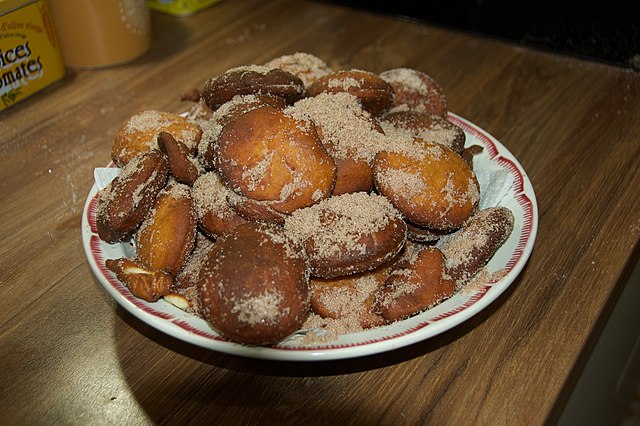
Verwurelter is a fried pastry, similar to donuts. The dough is prepared using flour, butter, milk, sugar, yeast, eggs and salt then shaped into knots before frying. They are served dusted with sugar. It’s a popular fair and carnival snack food.
Quetschentaart
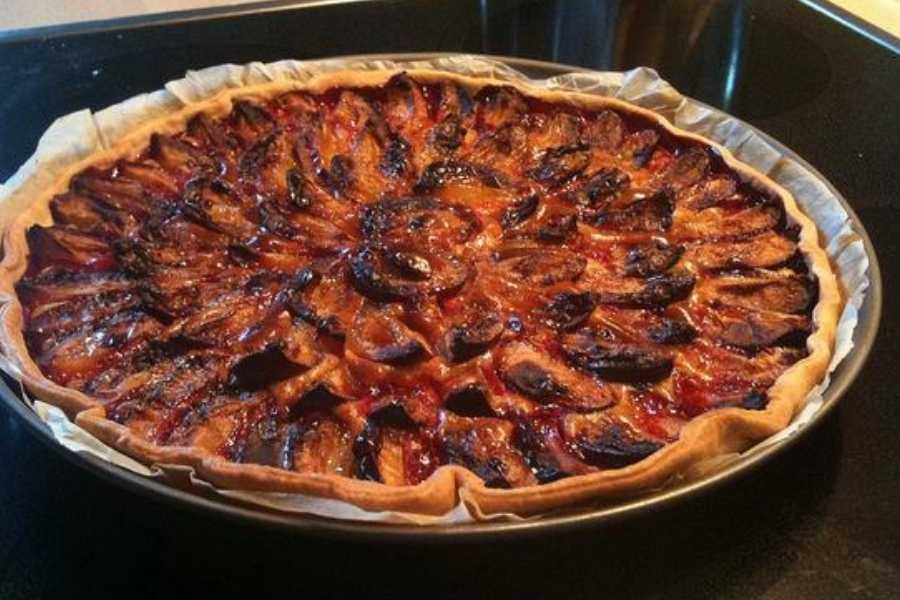
Quetschentaart is a tart made with sweet, ripened plums. Typically, a dark skinned, long oval shaped plum called a Damson plum is used. The plums are sliced and arranged over a tart pastry then baked. It is served with sprinkled sugar.
One variation to this dessert is Quetschentaart crumble. In this version, the pastry dough first gets a layer of plum jam before layering the plum slices. The slices get a flour and butter crumble before baking. This tart is most popular in the late summer when the plums are in season.



